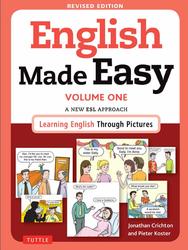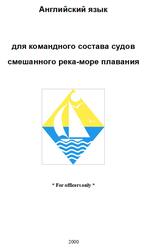This book can be used in class or for self-study. It is intended for learners at the upper A2 level and B1 level on the Council of Europe scale, and teaches more than 2,000 words and phrases. The vocabulary is organised around common everyday topics, but also contains units on different aspects of language such as phrasal verbs, uncountable nouns and link words and phrases. These units provide key information about lexis, but also help to ensure that learners are exposed to the most important vocabulary for their level. The first four units are dedicated to aspects of vocabulary learning such as record keeping and dictionary use. The book has been written so that units can be studied in any order, but I recommend you look at these four study units first, as they provide learners with important advice about vocabulary learning in general.

Family and friends.
My father died when I was nine, and so my mother was a widow with four young children. She remarried five years later, so now I have a stepfather. As he is not my real father, I call him by his first name, which is Dieter. I’ve got an elder brother called Thomas and two younger sisters, Anya and Claudia, who are twins. We’re a close family.
My mother is an only child, but I’ve got two uncles on my father’s side. One is married with two children, and the other is married with three children, so altogether I have five cousins. I get on well with Uncle Rolf, and he always tells me I’m his favourite nephew. Of his nieces, I think he likes Anya best.
Contents.
Thanks.
Introduction.
Learning.
1 Learning vocabulary.
2 Keeping a vocabulary notebook.
3 Using a dictionary.
4 English language words.
The world around us.
5 Country, nationality and language.
6 The physical world.
7 Weather.
8 Animals and insects.
People.
9 The body and movement.
10 Describing appearance.
11 Describing character.
12 Feelings.
13 Family and friends.
14 Growing up.
15 Romance, marriage and divorce.
Daily life.
16 Daily routines.
17 The place where you live.
18 Around the home.
19 Money.
20 Health.
21 Clothes.
22 Fashion and buying clothes.
23 Shopping.
24 Food.
25 Cooking.
26 City life.
27 Life in the country.
28 Transport.
29 On the road.
30 Notices and warnings.
Education and study.
31 Classroom language.
32 School education.
33 Studying English and taking exams.
34 University education.
Work and business.
35 Jobs.
36 Talking about your work.
37 Making a career.
38 Working in an office.
39 Running a company.
40 Business and finance.
Leisure and entertainment.
41 Sport and leisure.
42 Competitive sport.
43 Books and films.
44 Music.
45 Special events.
Tourism.
46 Travel bookings.
47 Air travel.
48 Hotels and restaurants.
49 Cafés.
50 Sightseeing holidays.
51 Holidays by the sea.
Communication and technology.
52 Newspapers and television.
53 Phoning and texting.
54 Computers.
55 Email and the Internet.
Social issues.
56 Crime.
57 Politics.
58 Climate change.
59 War and violence.
Concepts.
60 Time.
61 Numbers.
62 Distance, dimensions and size.
63 Objects, materials, shapes and colour.
64 Containers and quantities.
Functional language.
65 Apologies, excuses and thanks.
66 Requests, permission and suggestions.
67 Opinions, agreeing and disagreeing.
68 Likes, dislikes, attitudes and preferences.
69 Greetings, farewells and special expressions.
Word formation.
70 Prefixes: changing meaning.
71 Suffixes: forming nouns.
72 Suffixes: forming adjectives.
73 Compound nouns.
Phrase building.
74 Word partners.
75 Fixed phrases.
76 Fixed phrases in conversation.
77 Verb or adjective + preposition.
78 Prepositional phrases.
79 Phrasal verbs 1: form and meaning.
80 Phrasal verbs 2: grammar and style.
Key verbs.
81 Make, do and take: uses and phrases.
82 Key verbs: give, keep and miss.
83 Get: uses, phrases and phrasal verbs.
84 Go: meanings and expressions.
85 The senses.
Words and grammar.
86 Uncountable nouns.
87 Verb constructions 1.
88 Verb constructions 2.
89 Adjectives.
90 Prepositions: place and movement.
91 Adverbs.
Connecting and linking.
92 Time and sequence.
93 Addition and contrast.
94 Reason, purpose, result, condition.
Style and register.
95 Formal and informal English.
96 Completing forms and CVs.
97 Writing an essay.
98 Formal letters and emails.
99 Informal emails and messages.
100 Abbreviations.
Answer key.
Phonemic symbols.
Index.
Acknowledgements.
Бесплатно скачать электронную книгу в удобном формате, смотреть и читать:
Скачать книгу English Vocabulary in Use, Pre Intermediate and Intermediate, Redman S., 2017 - fileskachat.com, быстрое и бесплатное скачивание.
Скачать pdf
Ниже можно купить эту книгу, если она есть в продаже, и похожие книги по лучшей цене со скидкой с доставкой по всей России.Купить книги
Скачать - pdf - Яндекс.Диск.
Дата публикации:
Теги: учебник по английскому языку :: английский язык :: Redman S.
Смотрите также учебники, книги и учебные материалы:
Следующие учебники и книги:
 English World 1, Pupils Book, Bowen M., Hocking L., 2009 — English World is the first ever integrated ten-level print and digital English course for primary and secondary schools. Written by … Книги по английскому языку
English World 1, Pupils Book, Bowen M., Hocking L., 2009 — English World is the first ever integrated ten-level print and digital English course for primary and secondary schools. Written by … Книги по английскому языку English World 2, Pupils Book, Bowen M., Hocking L., 2009 — English World is a 10-level course designed for children and young people learning English as a first foreign language. They … Книги по английскому языку
English World 2, Pupils Book, Bowen M., Hocking L., 2009 — English World is a 10-level course designed for children and young people learning English as a first foreign language. They … Книги по английскому языку English World 3, Pupils Book, Bowen M., Hocking L., 2009 — English World is the first ever integrated ten-level print and digital English course for primary and secondary schools. Written by … Книги по английскому языку
English World 3, Pupils Book, Bowen M., Hocking L., 2009 — English World is the first ever integrated ten-level print and digital English course for primary and secondary schools. Written by … Книги по английскому языку English World 4, Pupils Book, Bowen M., Hocking L., 2009 — English World is an integrated print and digital English course for primary schools. Written by the authors of the best-selling … Книги по английскому языку
English World 4, Pupils Book, Bowen M., Hocking L., 2009 — English World is an integrated print and digital English course for primary schools. Written by the authors of the best-selling … Книги по английскому языку
Предыдущие статьи:
 English Made Easy, Volume Two, A New ESL Approach, Learning English Through Pictures, Crichton J., Koster P., 2015 — This is a book that keeps its promise. It makes learning English easy. People today learn English for a wide … Книги по английскому языку
English Made Easy, Volume Two, A New ESL Approach, Learning English Through Pictures, Crichton J., Koster P., 2015 — This is a book that keeps its promise. It makes learning English easy. People today learn English for a wide … Книги по английскому языку English Made Easy, Volume One, A New ESL Approach, Learning English Through Pictures, Crichton J., Koster P., 2015 — This is a book that keeps its promise. It makes learning English easy. People today learn English for a wide … Книги по английскому языку
English Made Easy, Volume One, A New ESL Approach, Learning English Through Pictures, Crichton J., Koster P., 2015 — This is a book that keeps its promise. It makes learning English easy. People today learn English for a wide … Книги по английскому языку English Phrasal Verbs in Use, Intermediate, Odell F., McCarthy M., 2017 — It was written to help you improve your knowledge of phrasal verbs In English. Phrasal verbs are verbs which have … Книги по английскому языку
English Phrasal Verbs in Use, Intermediate, Odell F., McCarthy M., 2017 — It was written to help you improve your knowledge of phrasal verbs In English. Phrasal verbs are verbs which have … Книги по английскому языку English Verb Drills, Swick E., 2009 — English Verb Drills is designed to help learners develop the skills that promote effective usage of verbs. It is a … Книги по английскому языку
English Verb Drills, Swick E., 2009 — English Verb Drills is designed to help learners develop the skills that promote effective usage of verbs. It is a … Книги по английскому языку




